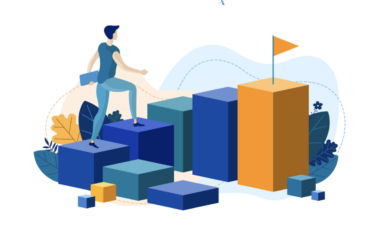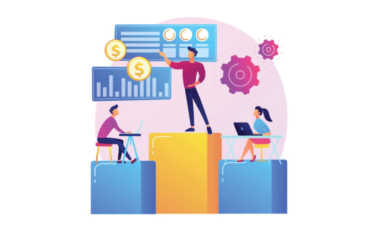106 Sales Terms To Help You Close [Sales Vocabulary Guide]
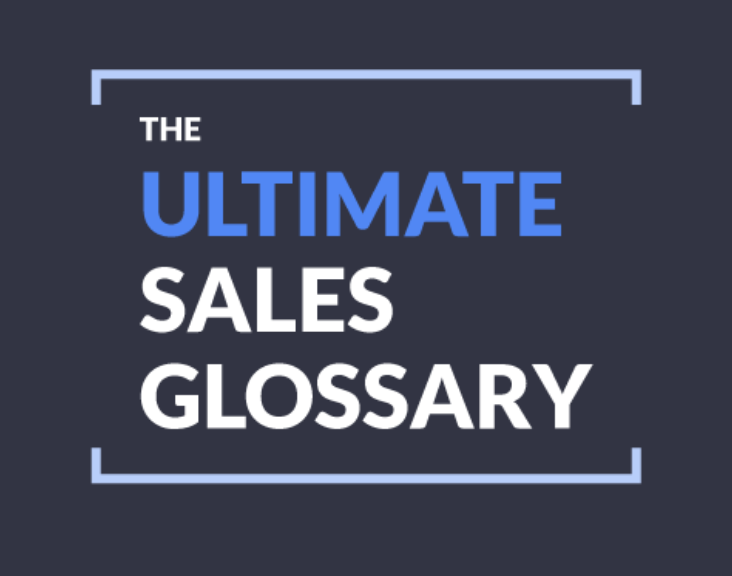
In this article
ABC…BANT…AIDA…
No, these are not random letters strung together. They’re actually commonly used sales terms. And if you’re looking to launch a career in sales, then you’re going to need to be familiar with the lingo.
That’s why we’ve created this glossary. Below, we’ll cover more than 100 sales terms and their definitions.
Ready? Then let’s get started.
How Important Are Sales Terms?
Understanding and using sales terminology can help you position yourself as an authority as a sales representative. It can also help you hit the higher end of what sales reps make. You can enhance your conversations with them with some sprinkling of high-level sales vocabulary.
If you plan to become a part of a big corporation, then knowing the sales slang is a must. Otherwise, you will feel buried in abbreviations and jargon during daily communication.
Let’s get started with 106 sales terms to know if you are trying to break into sales (and no, you don’t need a sales degree to master these!)
Sales Terms and Vocabulary
Always Be Closing (ABC)
Every action you take as a sales rep must align with closing a deal.
Account
This is the database of information you create after a particular customer buys from you for the first time. This account has all the information related to that customer. A sales rep is given a client account, which means they handle all interactions with that client.
Account Development Representative (ADR)
An ADR helps increase the number of client accounts. They identify sales prospects and study the market to align sales efforts.
Account Executive
Also known as the sales representative, an account executive manages customer accounts on a day-to-day basis. They understand the clients’ pain points, close deals, and help with customer satisfaction.
Account-Based Selling
This is a sales strategy that focuses on the most prominent accounts that the brand has. Sales reps focus on these high-value accounts to meet last-minute sales targets.
Ad-Hoc Reporting
This strategy is helpful in big companies with large databases. A sales rep can immediately understand the consequences of a particular sale in a given context with an ad-hoc report. It is an autonomous report that doesn’t have to go through the usual processes and analysis. You can generate it using real-time data.
Adoption Process
The buying process a potential buyer may go through, from gaining awareness about the product to adopting or rejecting the product.
Source: Lusha
AIDA
This classic 4-step model in sales and marketing represents the stages a buyer goes through while choosing a product or service, as depicted below.
Source: Search Engine Journal
Annual Contract Value (ACV)
This is the average revenue you generate per customer contract in a year. For example, your account executive has signed a customer for five years for $50,000. Then their ACV is $10,000.
ARR (Annual Recurring Revenue)
When a brand has a subscription-based selling model, it can track each subscription’s value yearly through this metric. The formula:
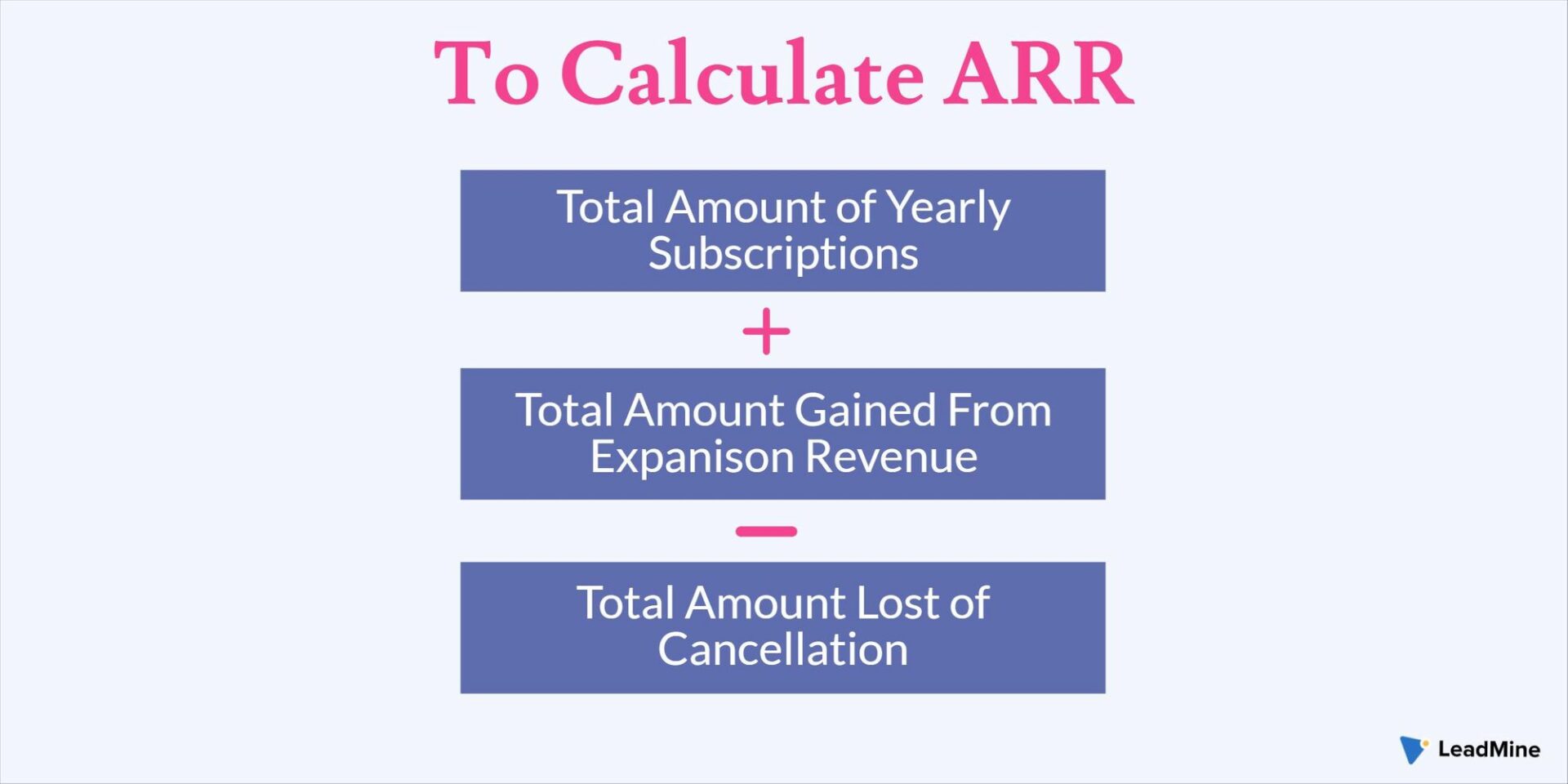
Business-to-Business (B2B)
This is a business relationship between a seller and another business. For example, if you are into SaaS sales, you may sell products to other businesses for commercial use.
Business-to-Consumer (B2C)
A relationship between a seller of a product or service and a buyer who is an individual customer—i.e. a skincare brand selling products to teenage consumers.
Bad Leads
Leads are prospects or potential customers who have shown interest in the product. Sales reps can pursue and convert them. Bad leads are those prospects that are unlikely to convert into customers.
BANT (Budget, Authority, Need, Timeline)
Created by IBM, this framework helps sales reps decide whether a particular sales prospect is worth pursuing, depending on whether:
- Do they have the budget to buy the product/service?
- Are they the right person to contact for purchasing decisions?
- Do they need what the sales rep is selling?
- What’s the timeline to convert them?
Benefit
The value that the customer derives from a product or service. If you want to start with software sales, you will need to find a way to not talk about the hundreds of features the software may have and jump to benefits. What specific and distinct advantages will a customer experience because of the product’s features?
Bluebird Sales
Named after the bluebird—a sign of happiness—a bluebird sale is a profitable sale that was a pleasant surprise for the sales rep. Companies shouldn’t rely on bluebird sales to reach their sales goal—it’s a lucky occurrence.
Bottom of the Funnel (BOFU)
The last step of the buying process, wherein the buyer has considered their pain points, looked at options, and is on the brink of choosing your product to solve their problem.
Business Development Representative (BDR)
BDRs are those sales reps that focus on cold-calling or other methods to get outbound leads and generate more business. A BDR job description includes cold calling, qualifying leads, etc. If pursuing outbound leads seems exciting or you want to know more about them, here’s a list of BDR interview questions that reflect the various situations BDRs handle.
Business Intelligence
Sales data related to a particular account or prospective customer will help sales reps prepare product pitches and presentations backed by data.
Buyer Behavior
How a buyer reacts to advertisements, sales, product choices, and other considerations while making a decision constitutes buyer behavior. The customer’s needs, preferences, and desires dictate how they make a product purchase decision or what their buyer behavior will be.
Buyer Persona
An ideal customer profile of your target customer based on market research. This may include their age, gender, job qualifications, and pain points. Here are some buyer persona examples.
Source: Semrush
Buying Criteria
Everything a buyer is looking to tick-mark while shortlisting a product/service. This could be a price point, size, kind of benefits they are looking for, is it the right time to buy, etc.
Buying Intent
When a customer shows buying intent, they are close to completing a purchase. This is when marketing would ramp up targeted ads to convert their intentions into action. Buying intent can be active (when a consumer is researching products and looking to buy) or passive (they know they need a product but aren’t researching for one).
Buying Process
The buyer process or lifecycle includes stages a buyer goes through before deciding on a product. This process has many iterative stages, but the three core stages are awareness, evaluation, and final purchase.
Buying Signal
An indication by a buyer that they are ready to make a purchase. This gesture or signal can be verbal or non-verbal. It can be anything that signals that the buyer is going ahead with the purchase. When the customer confirms add-ons, they are signaling.
Cases
A success story about how your product benefitted a customer. It outlines the customer’s problem, how your product solved it, and the benefits the customer received. These highlight positive client experiences you can share to bring other customers on board.
Churn Rate
The percentage of customers/ customer accounts that go inactive or customers who stop buying from you over a period of time. You can calculate it quarterly or yearly by dividing the number of customers you lost by the number you had to begin with at the start of the chosen quarter or year.
Close
You have closed the sale when a potential customer has decided to make a purchase.
Closed Opportunities
This is when the sales rep has either convinced or not convinced the buyer to purchase the product/service. Either way, the deal is now closed.
Closed-Lost
A closed opportunity in which the buyer doesn’t go ahead with the purchase of the product—i.e. the sales rep lost the deal.
Closed-Won
A closed opportunity in which the buyer goes ahead with the purchase of the product—i.e., the sales rep won the deal.
Closing Ratio
Based on the closed-lost and closed-won opportunities, the closing ratio is the % of close-wons. On an individual sales rep’s level, this will indicate their performance, and on a company level, it will indicate profits and sales predictions.
Cloud-Based CRM
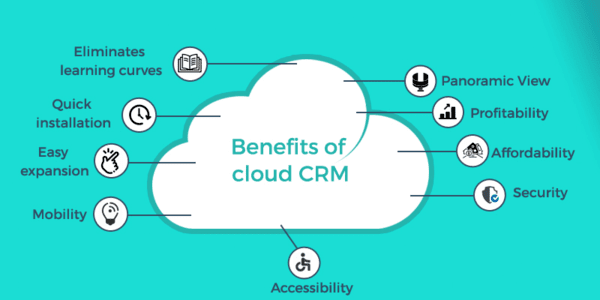
Source: Collocation America
A customer relationship management tool (CRM) helps sales and marketing teams track potential and current customers. A cloud-based CRM allows for easy cross-sharing of data.
Cold Calling
When a sales rep has a list of potential clients who have never shown interest but might want to know about the product/service, they use it to call and talk to them about the products/service. The exact process through email is called cold emailing, where the sales rep is the first to reach out via email.
Commission
Sales reps are not always salaried. They get paid for each sale they make, which is usually a portion of the sales revenue. You can calculate sales commissions in many ways.
Consumer
A person who uses a product or service. This person can be the buyer or someone else. For example, you may be a buyer of children’s books, but your children are the consumers.
Contract Management
The handling of a contract (with the buyer, vendor, employees/employee, etc.) while it’s active, which may include re-negotiating terms, using it to enforce transactions, and other contract terms.
Conversion
When you convert a customer, you have convinced them to take the necessary action, such as signing up for a trial, making a purchase, joining a loyalty program, subscribing to a newsletter, etc.
Conversion Path
This is the route that a visitor may take to become a lead, such as clicking on a CTA in a social media post, subscribing to a newsletter by giving the email ID (which the sales rep can later use to contact), or choosing to download an e-book.
Conversion Rate
Indicates how well a page performs—i.e. how many people are doing what you desire or expect them to do on a particular page, such as opting for the discount coupon, filling a survey or contact form, or booking a demo.
CPQ Software
In a traditional sales setting, sales reps would manually create quotes and proposals to send to customers. You can automate this process with configure price quote (CPQ) software. This reduces the time lag between a customer request and delivery, thus improving customer relations.
CRM Analytics
A predictive sales model that analyzes past sales data, customer information, and sales intelligence to show which customer segments will generate the most ROI.
Cross-Selling
When a sales rep convinces a customer to buy an additional complimentary item along with the one they came to buy or have bought. For example, when a sales rep cross-sells a laptop sleeve once the customer has chosen the laptop they will purchase, or pushing add-ons, such as with mobile bill plans.
Customer Acquisition Cost (CAC)
This is the total you spend on marketing and sales towards closing a customer for the first time. The formula is:
Customer Lifetime Value (CLV)
The profit you anticipate earning from a customer throughout their relationship and life cycle of buying from you. You can look at historical CLV (profits from a customer’s previous purchases) to gain a forecast of their value in the future. For example, if a customer spends $50 on a pet care food brand each visit per month, and they will continue doing so for the next ten years, then the CLV is 50X12X10 = $6000
Customer Relationship Management (CRM)
A CRM is a central hub for all customer information. CRMs can be of various kinds, depending on your needs.
Customer Success
This department is responsible for ensuring that customers can fulfill their goals with the products they’ve purchased. They also aim to generate customer loyalty while being as helpful and accessible as possible to the customers.
Decision-Maker
The person who has the authority to buy and is the one your sales strategies should target.
Demand Generation
As simple as it sounds, it refers to creating interest and want for your products. Demand generation is an umbrella term that includes practices such as lead generation, cross-selling, etc.
Discovery Call
The initial call to the prospect by a sales rep, during which you get a feel of their desires and pain points and test the BANT framework.
Escalations
Suppose a customer makes a complaint at the first point of contact, like customer care, and the customer care rep cannot solve the problem. They hand over the issue to a higher-up—i.e. they escalate the issue.
Feature
A characteristic of the product you are trying to sell to a customer. It is not to be confused for a benefit. A feature of a skincare serum can be that it has 4-5 of the best exfoliants, but the customer will say, “so what?” unless you also give them a benefit.
Field Sales Rep
Someone on the field meeting clients and closing customers through product demos.
Flywheel
Replacing the standard funnel, the flywheel model shown below is more holistic. It considers all sales funnel stages, such as awareness and engagement, but with a difference. In a flywheel, these stages are fluid.
Forecasting
Predicting future performance within a fixed period based on past data and using that to make decisions. Sales forecasts can help plan quotas, expenses, performance standards, etc.
Gatekeeper
A person who acts as an information access barrier or middle-person/facilitator among departments or between the company and the client—for example, a receptionist, personal assistant, clerk, etc.
Goals, Plans, Challenges, Timeline, Budget, Authority, Consequences, and implications (GPCTBA/CI)
This is a framework like BANT to help with lead qualification.
Gross Margin
Total sales revenue minus the cost of goods.
Key Performance Indicators (KPIs)
Target objectives you set for a task or parameters you select to meet a goal.
Lead
Any potential buyer that has shown interest in buying your product. A lead is someone you can pursue to choose your product over the competitor’s since they already may be interested.
Lead Generation
The process of accumulating leads through marketing and cold-calling so that you can further convince them to go forward in the buyer process.
Lead Management
The entire process of tracking, classifying, and prioritizing leads. Once you deem a lead as a good one, you can initiate contact or go about nurturing them to convert them.
Lead Nurturing
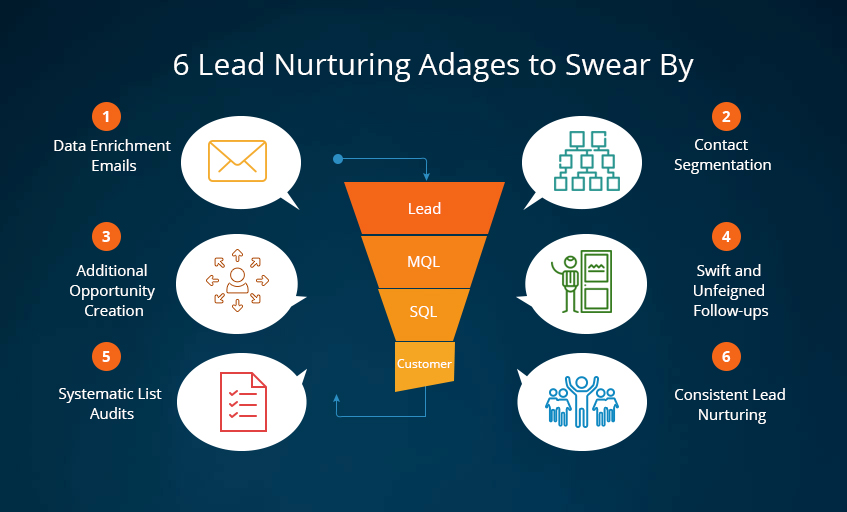
Further developing the interest a lead is showing in your product through tailored marketing or having conversations with them about any concerns they have so that they feel engaged and ready to trust your product.
Lead Qualification
As part of lead qualification, you must determine whether a lead is good enough to pursue. Remember the BANT framework we spoke about? That is one of the qualifying metrics for a lead.
Lead Scoring
This is used to rank or grade prospects using a set of parameters to determine how much business they can bring in. Collecting information about the prospect can help you score your leads.
Lifetime Value (LTV)
This is the profit value you peg to a customer or client account as a whole, for the length of their contract, after accounting for gross revenue and churn rate, among other variables. Here’s how to calculate lifetime value.
Source: Balance Small Businesses
Loss Leader
This is a product or service priced lower than its usual price or at a break-even price to attract customers.
LTV: CAC
The ratio of lifetime value and customer acquisition costs. A good ratio is generally 3:1—i.e., the value you get from a customer is three times the cost of acquiring them.
Margin
The cost of selling the product/service minus the cost of production.
Mark-Up
This is when a company adds a calculated amount to the cost of goods to account for its overhead.
Marketing Qualified Lead (MQL)
A lead that has been deemed qualified based on their interactions with the marketing department or marketing reps.
Middle of the Funnel (MOFU)
The stage in the funnel in which the lead is not entirely unaware of their need for a product. They are looking for solutions, and this is where you need to make your product visible to them.
Monthly Recurring Revenue (MRR)
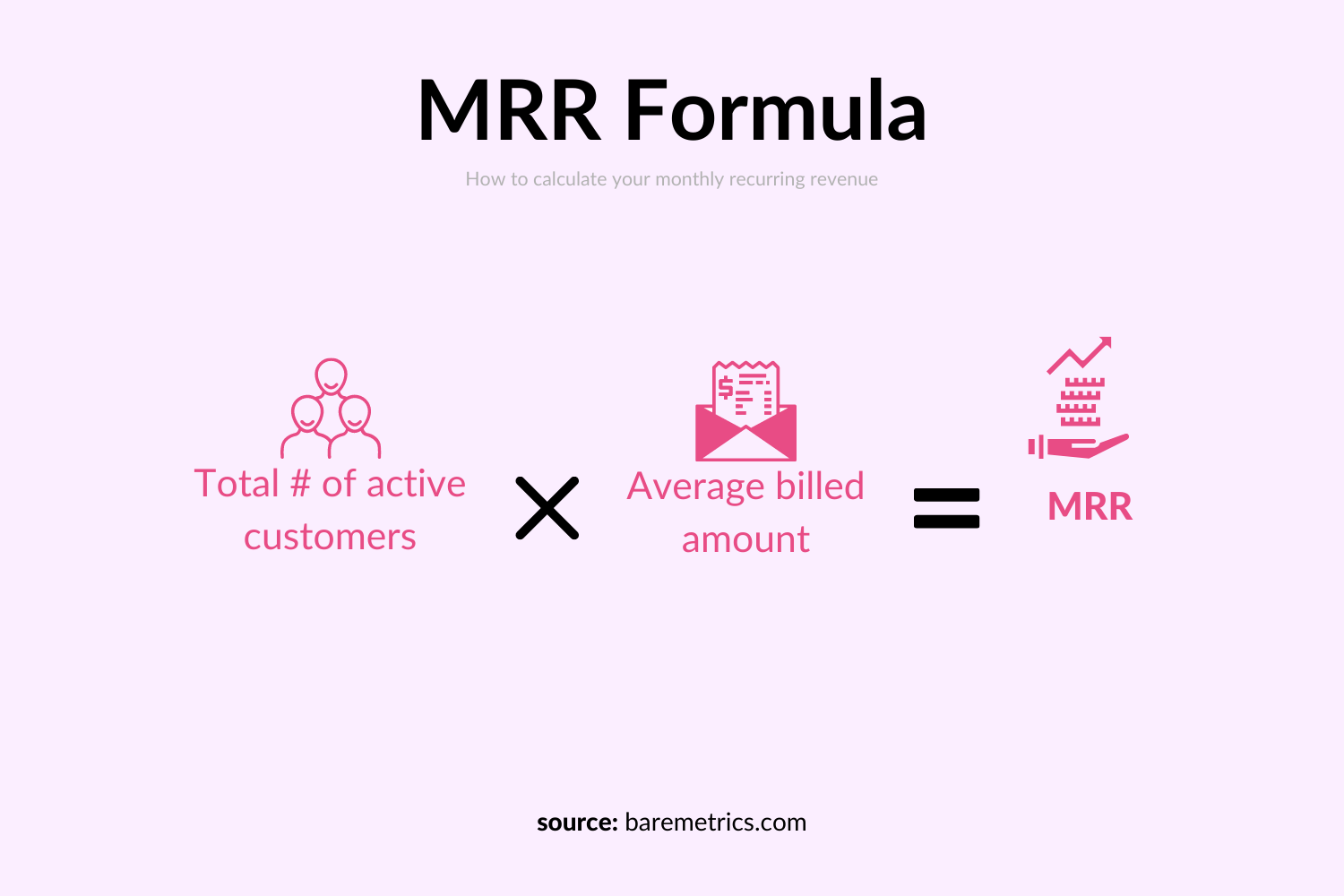
Similar to ARR, but monthly—i.e. revenue gained from each account every month.
Net Promoter Score (NPS)
Indicates how likely a customer will recommend your product/service. If the customer often buys from you and refers your product to others, you categorize them as promoters.
Objection
The prospect may have concerns or doubts after doing product research or after a sales call. These objections could be related to the pricing, relevance, or timing of buying the product. A good sales rep should be able to address objections with confidence.
On-Premise CRM
When the customer relationship management tool is on the company’s local server instead of the cloud. This is advantageous if you want to limit access to the CRM.
Onboarding
From an employment perspective, this means training or providing introductory materials to a newly hired sales rep or another employee. From a sales/customer perspective, this is used in the context of products or services that the customer has bought, which requires set-up assistance, manuals, demos, etc.
Opportunity
When a prospect has been vetted and qualified and is now seen as someone who can become a customer.
Outbound Sales
When the sales rep initiates first contact with the potential buyer through cold-emailing or other methods. This is in contrast to inbound sales, i.e. when the potential buyer gets in touch with your sales rep or engages on the website without you pursuing them.
Pain Point
This is a problem or need that the customer is trying to address. Identifying and addressing customer pain points will convince them to buy your product. If you are interested in tech sales, a relevant example could be when a customer’s pain point is that they cannot take clear photos with their phone. You need to sell them phones with high-quality cameras.
Performance Plan
An improvement plan that underperforming sales reps are asked to adopt. It can be seen as a kind of probation or assistive period in which the sales rep must improve based on feedback.
Pipeline Management
Ensuring that the sales pipelines and processes are progressing the way they should be and the leads are moving to the next pipeline stage, closer to buying the product/service. This form of tracking is also called opportunity management.
Positioning Statement
A sales rep’s opening pitch statement during a sales call or demo to catch the prospect’s attention. For a strong positioning statement, a sales rep can pull at a customer’s emotions related to their pain points.
Profit Margin
A company’s net income or net profits divided by net sales or net revenues for a given year or quarter.
Prospecting
Looking for potential buyers by putting out feelers, having conversations, or tracking those who match your buyer persona.
Qualified Lead
A lead whose buying criteria matches your product. It can also be someone interested in your products and services.
Quota
The sales target that a sales rep is expected to meet per month, quarter, or within any other given timeline.
Sales Dashboard
A central hub where the sales rep can access all the sales intelligence and metrics in a digestible manner, such as through visual aids and data models.
Sales Development Representative (SDR)
An SDR handles inbound leads, that is, those who approach the brand themselves without any cold-calling (which generates outbound leads) and show interest in the brand’s products. If this position appeals to you, this set of SDR interview questions will come in handy.
Sales Enablement
Equipping the sales team with the correct training, strategies, and tools to close sales.
Sales Funnel
The representation of the customer journey, from awareness of the product to purchase. Here’s a representation of the sales funnel:
Source: Researh Gate
Sales Methodology
This captures the underlying ethos that backs your sales process. These could be a set of frameworks or principles that penetrate through your sales strategies and techniques. For example, SNAP and target-account are among these 12 popular sales methodologies.
Sales Performance Management
This includes assessing and tracking all the pieces that constitute the sales performance of a sales rep. This could include quotas, lead management, sales pipeline coverage, etc.
Sales Pipeline
This is the stage-by-stage representation from the customer’s perspective of the sales process. The goal is to take prospective customers from the start of the pipeline, where they might be showing some interest, to the final stage, where they buy the product.
Sales Pipeline Coverage
The total pipeline coverage represents the revenue target you want to hit or the number of customers you want to convert. The sales pipeline coverage compares how much of this target you have covered.
Sales Process
This is the road map the sales rep follows to achieve a closed-won opportunity. Most companies have a blueprint of distinct repeatable steps that a sales rep can follow.
Service Level Agreement (SLA)
This contract lays down the expectations the sales and marketing departments can have from each other. It’s a cross-commitment model that lays down each department’s responsibilities vis-a-vis the other department. The goal is to align sales and marketing efforts.
Smarketing
This is the intersection of sales and marketing to create synergy. Sales and marketing may be different departments, but they need to work closely for efficiency. When the sales team identifies leads, passing them on to the marketing team to create ad campaigns is what converts customers. Siloed efforts that do not embrace smarketing will fail.
Social Selling
When companies deploy social media as a part of their sales strategies to increase the level of interaction and engagement that the customer may have with the product. This will increase the product’s interest and give the sales reps a platform to answer buyers’ doubts.
Stage
Another word for each “phase” of the sales pipeline. There is no universal set of stages. It differs from company to company or product to product. As a sales rep, you should have clarity about the stages of the sales pipeline of a particular product so that you can nudge your leads to advance to the next stage.
Territory
The physical demarcation of customer regions or customer groups so that each sales rep has a fixed group they can focus on and be responsible for.
Top of the Funnel (TOFU)
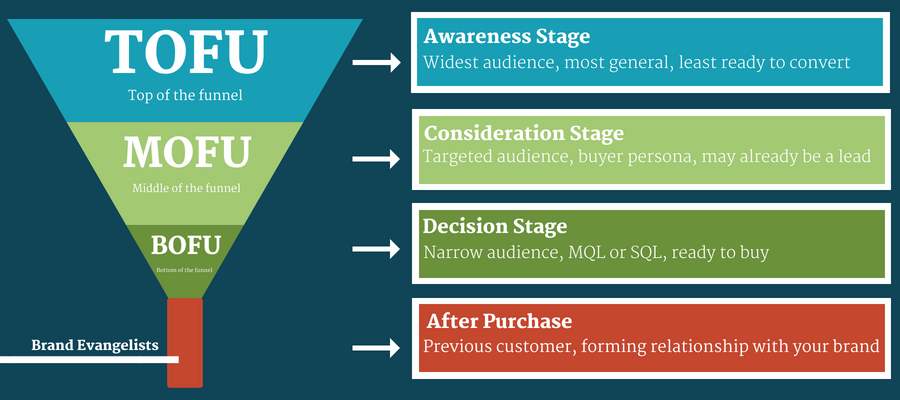
This is the first step in the buyer’s journey. The lead or prospective customer is gathering more information about the product, getting to know the brand, or maybe exploring what they need to solve their problems and pain points. You will need to support them with content that helps them complete their information-gathering step.
Upselling
Convincing the buyer to go for more expensive products or higher-end versions of a product that the buyer is interested in. For example, when you convince a customer to buy a hardcover versus a paperback by highlighting its durability.
Value Proposition
The main benefit you promise to provide your customer through your product or service. This can be what attracts your customer to your product in the first place or the clincher that gets them to purchase.
Warm Call
Getting in touch with a potential customer after they have interacted or connected with the business, whether in the form of a referral, signing up for an email newsletter, etc.
Weighted Sales Pipeline
Consider the sales pipeline we talked about. Now, we are attributing each stage of the pipeline with a value or score that denotes its importance or is indicative of how likely the consumer is going to make a purchase. So the initial stages of the sales pipeline or buyer’s process may have less weightage, closer to 10%, whereas the final stages (nearing a closed-won) will have almost a hundred percent value.
Tips for Using a Sales Term Correctly
Now that you’re equipped with these sales terms, but how do you use them effectively?
Make Sure You Know the Definition!
Using sales terms without knowing what they mean can dilute your authority. Perhaps you want to feel more involved in the conversation or think the sales pitch is going nowhere, so you resort to the good ol’ sales vocabulary to fill time. That’s not an intelligent approach. The usage should be relevant, and you must be sure of the meaning before using it.
Keep It Industry-Specific
Some sales lingo will be irrelevant to the client and their industry. There might be some sales terms that have different meanings in other industries. Try to make a note of these parallels and differences so that your usage of sales vocabulary is industry-specific.
Don’t Make the Other Person Feel Dumb
Using sales terms is effective only when you create an impression of knowledge or the inclusion of sales lingo is relevant. Sometimes, sales slang that comes naturally to you may not be evident to the person you are interacting with. Using these sales terms without explaining the meanings can make the other person feel dumb. Gauge the knowledge level of the audience. Then use the sales terms you know accordingly.
Sales Terms FAQs
Wondering how to make the best use of your newfound sales vocabulary? Here are some questions that may be on your mind:
Should You Always Use Sales Terms?
It depends on the situation. If you are communicating with someone with whom using sales terms is going to save time, show your expertise, or generally cause no issues, then go for it. If your sales terms are likely to confuse a sales prospect, or if you are unsure of their meanings, you can try to avoid using them.
When Should You Use Sales Terminology With a Client?
The following should help you decide whether you should use a particular sales terminology with a client:
Will it contribute to closing the deal? Is it relevant to the client?
Will it make the client confident in your sales acumen, especially if they haven’t interacted with you?
Is the sales terminology pertinent to the context of the conversation, or are you trying to plug it in?
Are you prepared to field all questions and doubts related to the sales terminology?
These will help you decide when to use sales terminology with the client. The desire to connect with the client should be your priority; sales slang can come later.
What’s the Best Way To Learn More Sales Lingo?
Consuming word lists full of sales lingo might not be the best way. Instead, immerse yourself in various forms of sales. Want to become a technical sales representative? You can pursue courses such as our Tech Sales Bootcamp.
You can also join internships/jobs through this sales job board that will give you a peek into how sales professionals interact with different sections of people.
Since you’re here…
Earn a tech-level salary, minus the whole learning-to-code part. Our Tech Sales Bootcamp will boost you into a tech sales job in just 3 months, or your tuition money back. Get a snapshot of our results on our student reviews page and read more about *your* new industry in this tech sales career guide.
